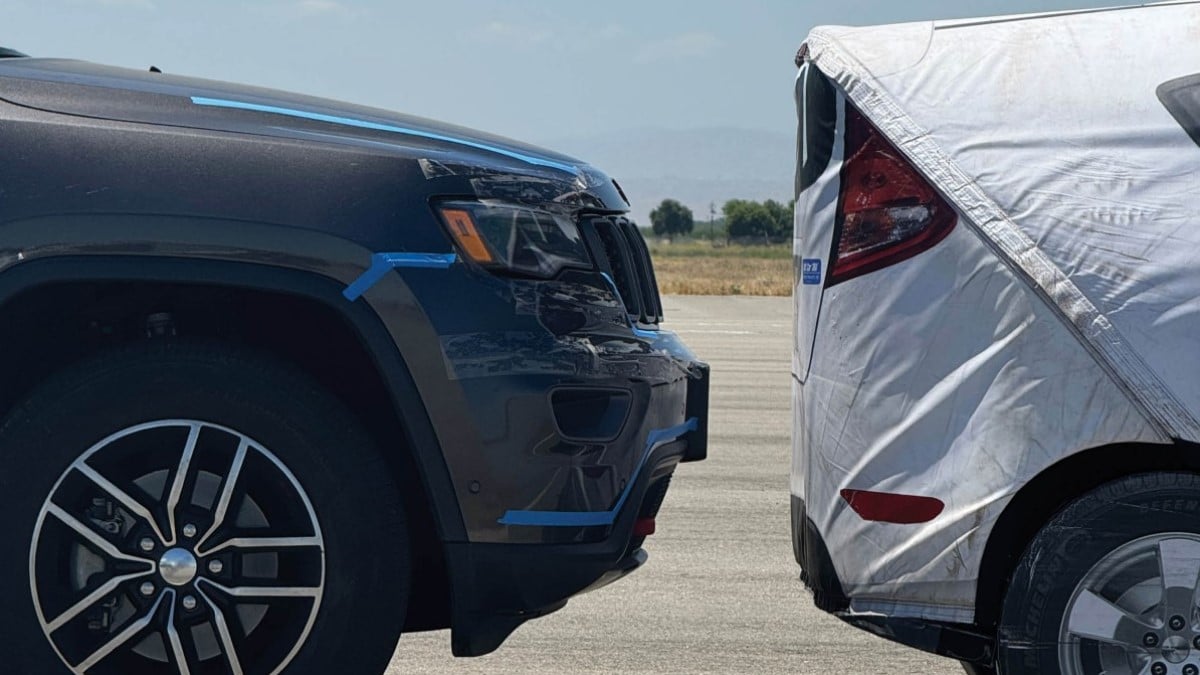
In accordance with a brand new spherical of AAA assessments, automated emergency braking methods are getting higher, however they nonetheless have room to enhance.
That enchancment is prone to occur quickly.
What Is Automated Emergency Braking?
AEB methods use sensors to detect doable collisions and brake to keep away from them. Generally, they sluggish a automotive sufficient to forestall a collision. Once they don’t, they’ll nonetheless sluggish it sufficient to minimize the severity of a crash.
Associated: How Does Automated Emergency Braking Work?
These methods have been as soon as widespread solely to luxurious automobiles, however practically each car available on the market for mannequin years 2024 and 2025 advertises automated emergency braking.
Even the least costly new automobiles, just like the under-$18,000 Mitsubishi Mirage and Nissan Versa, have AEB.
Sadly, the time period has grow to be one thing just like the phrase “pure” on a meals label. No authorized requirement governs what it means. AEB can fluctuate broadly from one automotive mannequin to a different.
The methods additionally change yearly as automakers enhance the {hardware} and the software program that controls it.
AAA’s Testing
AAA researchers wished to learn how a lot AEB methods are enhancing.
AAA put two teams of automobiles via a sequence of AEB assessments. Each teams included automobiles of the identical make and mannequin. One group was from mannequin years 2017 and 2018, and the opposite was from mannequin 12 months 2024.
The brand new group outperformed the previous.
Examined automobiles included:
• 2017 and 2024 Jeep Cherokee
• 2018 and 2024 Nissan Rogue
• 2018 and 2024 Subaru Outback
They drove every automotive towards a dummy automotive designed in order that sensors would detect it as if it have been a traditional automotive however made gentle sufficient to hit safely, conducting the drives at regular charges of 12, 25, 35, 45, and 55 mph.
The Outcomes
“New mannequin autos (2024) have been practically twice as prone to keep away from a collision as older mannequin autos,” the researchers write.
Each 2024 automotive prevented a collision at 12, 25, and 35 mph. Older fashions prevented 73% of collisions at 12 mph, 47% at 25 mph, and 33% at 35 mph.
Above 35 mph, issues bought extra focused, as researchers solely examined autos that prevented collisions at decrease speeds.
“Three out of 4 autos evaluated have been in a position to keep away from a collision at 45 mph. The check velocity was elevated to 55 mph for these autos that prevented a collision at 45 mph. None of those remaining autos examined may keep away from a collision,” AAA says.
Limitations of AEB Techniques
Some automakers now promote AEB methods able to detecting bicyclists or pedestrians, however AAA didn’t check these claims. Researchers examined solely ahead collision avoidance methods.
Nonetheless, an insurance coverage business security lab, the Insurance coverage Institute for Freeway Security (IIHS), has examined these claims. In testing earlier this 12 months, the IIHS discovered AEB methods have been a lot much less profitable at detecting a bike.
Some additionally promote reverse AEB methods meant to forestall drivers from hitting a automotive when backing up. These methods struggled in AAA testing in February.
They’re Prone to Preserve Enhancing
Till now, AEB has been unregulated. In April, the federal authorities introduced guidelines that can mandate AEB on all automobiles offered within the U.S. starting in 2029.
Mandating one thing everybody already does sounds redundant, however the Nationwide Freeway Visitors Security Administration (NHTSA) has a purpose for the transfer.
The brand new rule would require automobiles to move particular assessments.
“The brand new commonplace requires all automobiles have the ability to cease and keep away from contact with a car in entrance of them as much as 62 miles per hour,” NHTSA says. Automobiles should additionally “detect pedestrians in each daylight and darkness. As well as, the usual requires that the system apply the brakes mechanically as much as 90 mph when a collision with a lead car is imminent and as much as 45 mph when a pedestrian is detected.”
Although AAA’s assessments confirmed enchancment, not one of the automobiles they examined may move that check.
Automakers have 5 years to enhance their AEB methods sufficient to move it.